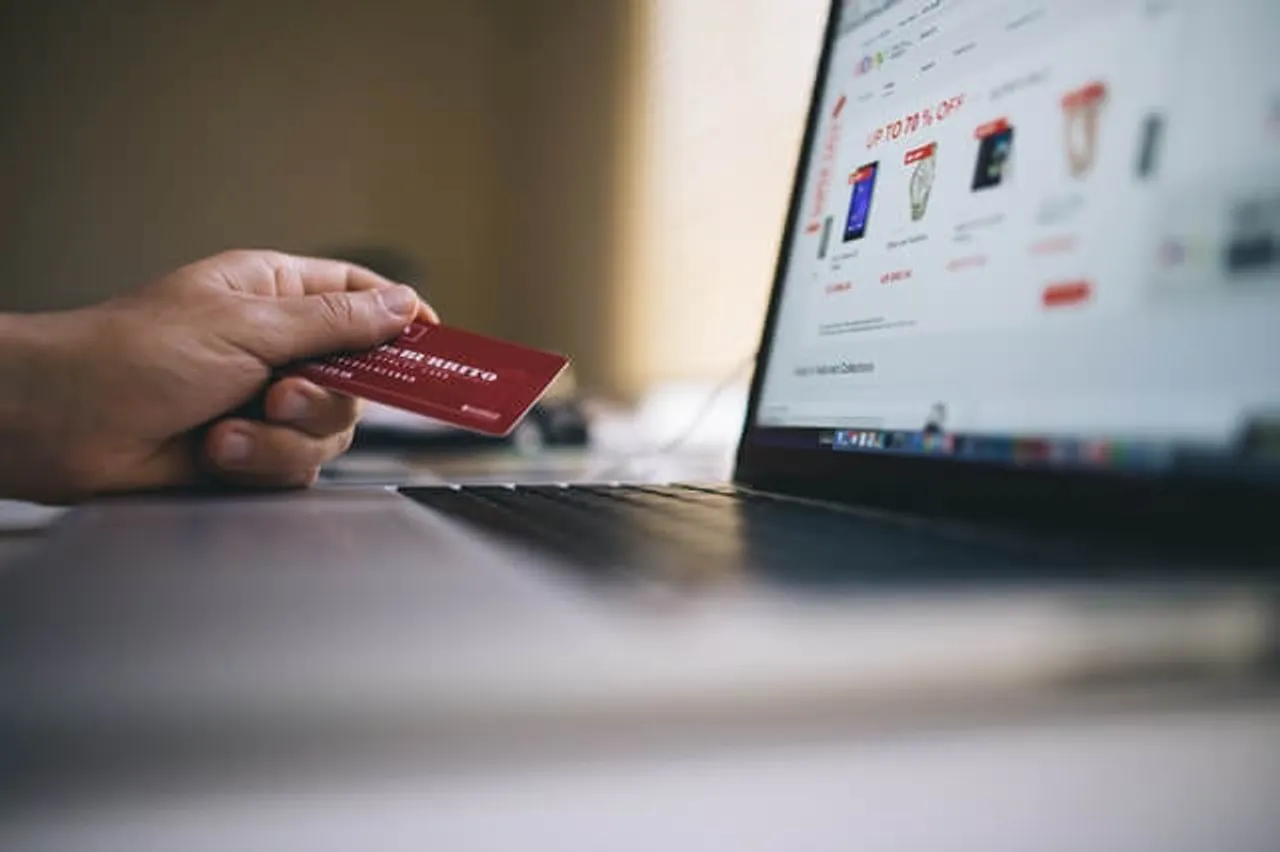
For your business to stay competitive in the digital age, you’ll need to have a card processing company to manage your customers’ credit and debit card payments.
However, before you can integrate this into your checkout, you’ll need to get a credit card merchant account.
It’s possible to accept card payments without a merchant account. But if you want to go ahead and get one, then you can read this guide for insights on the process. So, let’s get started.
What is a credit card merchant account?
It’s a bank account you use to establish business requirements to accept, and make, credit card payments.
Once you’re set up with merchant account credit card processing, you’ll be able to accept credit cards and debit cards. Plus, various other forms of electronic payments.
Is a merchant account the same as a business account?
No, there are key differences. You use a business bank account to handle expenses that setup and maintain your organization. So, think along the lines of rent and utilities.
On the other side, a credit card merchant account is a bank account setup with your merchant services provider. All it maintains is credit card processing.
What is an example of a merchant?
A merchant is considered a business that engages in selling or trading goods. Here are a few examples of how this applies in the internet era:
- An online retailer selling online goods with a digital storefront.
- SaaS businesses offering software B2B.
- An employment law business offering online legal services to clients.
In other words, it’s any type of business that’s selling goods or services online. This makes them an online merchant.
Are merchant accounts free?
No, there are charges and fees associated with merchant accounts you’ll need to pay for. This varies from provider to provider, but it can include activation fees and charges for customer transactions.
What is a merchant account fee?
There are fees associated with a merchant account credit card processor. This is typically in the form of a monthly charge you’ll set up with your provider.
The charge is sent to the merchant acquiring bank. The charge is to cover the tasks the provider provides you with, mainly verifying electronic payment card risks and for settling transaction funds.
You’ll always be charged for this no matter the provider you use, although rates can vary from one to the next.
How hard is it to get a merchant account?
To get a credit card processing merchant account is a straightforward process, you just need to organize your business documents to submit a successful application.
You’ll need to validate your business’ legitimacy alongside proving your financial security and long-term prospects.
While that may seem daunting, the reality is all you need to do is gather the appropriate documents and submit them to a bank.
Below, we’ll take you through everything you’ll need.
How do you get approved for a merchant account?
One of the first steps you need to clear is getting approved for a credit card merchant account. The good news is this is much easier to do than you might think.
However, it’s still quite a time-consuming task and you’ll need various documents to verify your business and gain clearance.
To help you understand these, we’ll take a closer look at each area.
Business bank account
You’ll need to supply your business expenses to show you’re a legitimate business venture.
Proving your business bank account and the sufficient funds within it is a big step, as having overdraws or low balances poses a risk for gaining an internet merchant account for credit card processing.
Financial statements
You’ll need to document your bank statements to prove your business’ overall competence with its finances. You may need to dig up records going back up to two years.
If that’s not possible (as in, you’re a new business) then you’ll need to showcase your business’ strong current financial position along with expected forecasts for future growth.
Business license and proof of address
There may be a need to provide your business license, which you can prove with a sales tax registration, occupational license etc.
Along with this, you’ll need to provide your address. This is the location for where your mail is sent.
Employer identification number
Depending on where you are in the world, you may need to prove your employer identification number (EIN). This is the US example.
Check your local requirements to see what you’ll need to offer if you’re elsewhere in the world.
Articles of incorporation
This requirement is for you to incorporate your business to legitimize your operation in the eyes of your government.
Financial legal compliance
You need to prove your business is legally compliant with the financial authority in your country.
This may be the FCA (Financial Conduct Authority) and the PCI DSS (Payment Card Industry Data Security Standard).
Miscellaneous documents
This may include marketing materials, your business plan, voided check, business policies, forecasts, and your inventory reports.
How do I get a merchant number?
You may also hear about a merchant number, which you can acquire once you officially open your merchant account with a bank.
When you’re up and running with your account, then you’re supplied by your payment processing provider with the number.
You may hear this called an MID (merchant identification number).
How do merchant service providers make money?
If you’re wondering through all of this how merchant account providers make money, this is down to the partnership they have with banks. Basically, their bank association and setup fees are what earn them money.
Additionally, there are account activation, statement, and credit card transaction fees they make their money off.
This is often why merchant providers require you to have a specific amount in your account before they accept you, so they can be sure they’ll receive fees from you.
How long does it take to get a merchant account?
With the amount of documents you need to gather for the application, as well as the review process required, it can take up to two weeks to get setup for your merchant account.
However, it’s often a much faster process than this. And you can actually be setup with your account in less than a week—at least in some instances.
Which merchant account is best?
There’s a lot of choice available for modern businesses, with many merchant accounts available you’re spoilt for choice. So, which one is your best bet?
Well, when picking a merchant account provider you should consider the provider’s:
- Pricing plans.
- PCI compliance.
- Various fees.
- Reputation in the industry.
You can ask a suitable merchant provider about their experiences in the industry to determine if you’re happy to use them.
The knowledge they provide about payment processing and customer service should help you work out the best merchant account provider for your business.
How does a merchant account work?
Now you know the basics, here’s a closer look at how your merchant account works for your business.
The way a merchant account works is to process your card transactions. They then charge a processing fee and send the rest of your earnings to your bank account.
So, yes, this means when you complete a transaction with a customer the money doesn’t go straight into your bank account.
Instead, it has to go through an authorization process which your customers’ various banks will process. And then the merchant account will process it as well.
Add into this fraud fraud protection requirements and customer account checks and it’s a busy process that’s completed in a matter of seconds.
What follows is a settlement period. This is where the funds reach your bank account, which usually takes around one-three working days.
Basically, there’s a four step process for any transaction. It goes like this:
- A customer buys a product or service with their credit card issues by their bank.
- The details are captured by the merchant account provider and sent to the customer’s bank.
- The card provider gets the customer’s bank to charge them.
- The bank then pays the card provider with the customer’s money.
And after this, following the period of one to three working days, the money will reach your account.
As you can see, it’s quite a long period to wait for a customer’s money to reach you. But as the process includes so many essential security and validation checks, it’s actually a fast and effective way to ensure you receive money for transactions.
How FasterPay works for your business
FasterPay is an excellent option if you’re looking for merchant account credit card processing.
You can easily integrate our payment platform into your website. Whether you have coding experience or not, it’s simply to setup and provide your business with:
- Generated pay buttons you copy and paste into your site.
- Multi-currency global payment processing.
- A seamless checkout page to take care of your customer’s transactions.
- Recurring billing with our subscriptions.
- Plugins like WHMCS, Shopify, Magento, and WooCommerce.
- FasterPay Android SDK to make app payments easier.
- Seamless and secure payment processing.
- Maximized revenue and lower churn rates.
We have a full FasterPay for business guide for everything else you need to know about how we support SMEs across the world.
Can I get a merchant account with bad credit?
Despite a good credit score being important, you don’t need to have one to have a merchant account.
Of course, it does help a great deal if you do have a strong score. But you can still take steps to get your account setup even if you’re struggling with bad credit.
To get around the issue you can apply for a high-risk merchant account. This is an account your business can receive if you're at a greater risk of fraud and chargebacks.
It’s the providers who make that decision for your business. And they’ll do this based on your financial history, location, and other factors.
What are high-risk merchant accounts?
When you’re applying to a merchant account provider, they’ll review details such as your tax information and perform a credit check.
When they’re checking this information, if they consider anything to be of concern then they’ll classify you as a “high-risk” merchant.
This means they’ll either refuse your application… or, they’ll provide you with higher rates and fees to accommodate for potential issues.
Remember, every merchant account provider has different standards they take into consideration. So you may want to research who you apply to before gathering your documents for submission.
And if you’re accepted, you may end up paying 1%-2% more than standard merchants in a provider’s client base.
You may also face longer contracts, tiered pricing, chargeback fees, automatic renewal clauses, and more. So, check your contact before proceeding.
How do I get a high-risk merchant account?
If you want to get a high-risk merchant credit card account, you’ll need to complete an application form. You can do this for free online.
This process is simple to complete and won’t take much time.
And once a bank accepts you and your business is approved by the acquiring bank, you can go ahead and start processing payments and accept credit cards in your online merchant account.
Use FasterPay’s merchant services
To take advantage of FasterPay’s merchant services, all you need to do is create a free FasterPay business account now and get started.
We also have a free app that’s available here:
And if you need any help, we have a 24/7 customer support team waiting to answer any questions: support@fasterpay.com.



